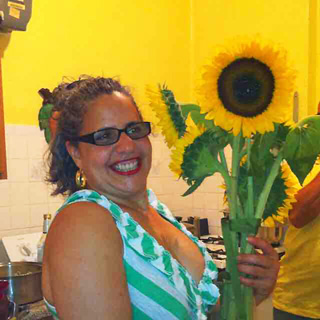Living With Lupus
By Kenny Nunez
 Mildred Jerez, a 56-year-old Dominican mother of three, has been fighting systematic lupus erythematosus (SLE) for nearly 10 years. “Sometimes the pain is so strong, I can’t get up from my bed,” says Jerez. “It doesn’t feel like it’s getting any better.”
Mildred Jerez, a 56-year-old Dominican mother of three, has been fighting systematic lupus erythematosus (SLE) for nearly 10 years. “Sometimes the pain is so strong, I can’t get up from my bed,” says Jerez. “It doesn’t feel like it’s getting any better.”
She is one of the estimated 1.5 million people living in America with lupus and one of the five million people worldwide. Lupus (SLE) is an autoimmune disease that affects organs as well as bones and joints. It causes the immune system to attack healthy cells and tissues in the body, causing inflammation and tissue damage. It is a disease that can be easily missed and can lead to death, if not properly treated. Common symptoms are joint pain, fatigue, memory problems, and skin rashes.
There are three types of Lupus. Systemic lupus erythematosus (SLE) is the most common type. SLE affects organs, bones and joints. Discoid lupus causes a rash usually on the face, neck or scalp. There is also drug-induced lupus, which is caused by a bad reaction to medication. This type of lupus goes away when you stop taking the medication.
One of Ms. Jerez’s first sign of lupus was her joint pain. She was a housekeeper in a five-star hotel in Manhattan for seven years, but had to resign due to her chronic pain. “Even pushing the cleaning cart full of supplies was difficult sometimes because my hands would be in so much pain,” she said as she massaged her fingers. “They felt as if they were going to fall off.”
This is just one of the many symptoms that Jerez has experienced. Recently she was on her way to the supermarket, but had to return home because her knees were in so much pain after going down five flights of stairs. With the help of her children (36, 28, and 26 years old), she is able to get by. They help her as much as she can when they go to visit her, but it takes its toll. “Sometimes it is just too painful to see her go through all the pain,” says her youngest Adam.
Lupus affects women more than men and can usually start at the age of 14. It is more common with Hispanics and African-Americans and it is common in boroughs like the Bronx and Manhattan (Harlem and Washington Heights), where the population of Hispanics and African-Americans is higher.
All over New York City There are many health centers that offer support for those with lupus and friends and family members who know people living with the disease. Jerez usually attends group meetings that are held by the S.L.E. Lupus Foundation. “It is a way for me to meet others who are going through what I’m experiencing and it also allows me to be better informed,” says Jerez. “I’m not very well with technology, so hearing someone talk about this painful disease is the best way for me to learn about it.”
The S.L.E. Lupus Foundation holds monthly group meetings at the Urban Health Plan, Inc. on 1070 Southern Boulevard. Every August it also hosts Camp Sunshine, where 40 kids with lupus participate in family activities and learn more about the disease. The organization also provides the kids and the families 24-hour onsite medical and psychosocial support.
In the past, lupus is a disease that few understood, but that is changing as many people have started discussing it publicly like celebrities Toni Braxton, Nick Cannon, and Selena Gomez. Gomez recently announced she has lupus. In 2014, she went for chemotherapy, which is usually done for cancer patients, but it can also be used for rheumatology because it slows down cell reproduction in order to control inflammation.
Part of keeping lupus under control is also watching the diet. Just like any one who is trying to be healthy and lose weight, cutting out fried foods can decrease the chances of having a stroke, heart disease, and even diabetes. Cutting back on salt is another good thing to do because it can decrease the chances of high blood pressure and kidney disease. It is recommended to eat foods that are fresh, more vegetables, and more foods that are baked or grilled. Taking vitamins like calcium and vitamin D can help your bones.
Unfortunately, lupus is a disease that has no cure. Mildred continues to live her life as best she can. She refuses to let lupus take control of her life. She attends group meetings, volunteers at workshops, and cooks for her friends and family to keep her mind. She says she is determined to fight and win the battle.
